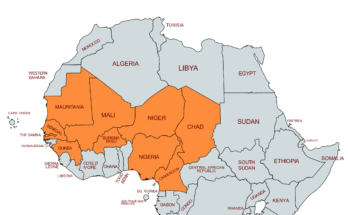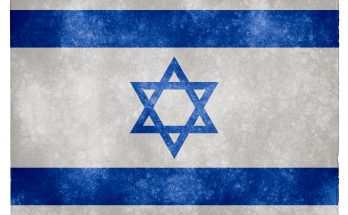TIME reported on May 9, 2017 that Emirati Archangels have deployed to Libya in support of a local militia commander.
The TIME report noted that at least six U.S.-made turboprop aircraft — likely either Archangels or AT-802s — have been deployed to Libya, at al-Khadim airbase. These aircraft support operations by Khalifa Haftar’s militia, called the Libyan National Army (LNA).
The CEO of IOMAX, which manufactures the Archangel, spoke to TIME in an interview regarding the apparent deployment, saying, “The airplanes have been there, but it wasn’t airplanes we sold Libya.”
When TIME asked if the United Arab Emirates (UAE) had sent the Archangels, IOMAX CEO Ron Howard replied, “I would suspect that that’s probably who it is, yeah.”
He added that the former Prime Minister of eastern Libyan government, Abdullah al-Thani, had previously approached him regarding a potential deal for Archangels, but no agreement was signed. The eastern government supports the LNA and Khalifa Haftar.
The LNA has generally denied the Emirati deployment to al-Khadim — and the UAE declined to comment to TIME — but the airbase has undergone substantial infrastructure improvement over the last year, and apparent foreign-deployed aircraft have been spotted on satellite imagery there. In October 2016, IHS Jane’s reported six AT-802s, two UH-60s, and two Wing Loong combat drones were deployed to the airbase, as of satellite imagery dated July 2016.
Moreover, TIME cited Rami el-Obeidi, the former intelligence chief for the National Transition Council, as confirming the deployment.
Some of the aircraft were still visible there earlier this year.
#UAE Air Force Air Tractor AT-802 and Wing Loong UAV at Al Khadim AB in #Libya Date: 2017-01-12 pic.twitter.com/IVPxbQEovX— Aldin Abazović 🇧🇦 (@CT_operative) March 8, 2017
Satellite imagery of Al-Khadim airbase on 3rd March 2017 – New shelters have been built #Libya #UAE pic.twitter.com/CFkuzAvzq0— Arnaud Delalande (@Arn_Del) April 3, 2017
It is unclear who operates the aircraft, though analyst and War Is Boring contributor Arnaud Delalande reported in January 2017 that they were being piloted by contractors. It is believed that AT-802s have been in Libya since at least June 2015 according to previous reporting by Delalande, who has also noted that the infrastructure build-up at al-Khadim could indicate that further Emirati deployments are in store down the road.
Libya is currently under an international arms embargo, which would ban the transfer of arms to any party in the country. The United Nations Security Council has entertained the possibility of providing arms to the Government of National Accord (GNA), which is the internationally-recognized government, but only under circumstances where the weapons were used explicitly to fight extremists such as the Islamic State.
Any deliveries to the GNA must receive authorization from the Security Council. The United Nation’s special envoy to Libya, Martin Kobler, noted earlier this year,
“If you have armed units like for example the presidential guard now in Tripoli, reporting to the authority of the supreme command of the army, which is according to the Libyan political agreement, the presidency council, they are in the process and entitled to have an exemptions from the weapons embargo from the sanctions committee of the Security Council of the United Nations.”
The Security Council is looking to see further political reconciliation before fully lifting the arms embargo. The GNA, set up under the intention of being a unified government, has not received support from major stakeholders, including the eastern government, which operates out of Tobruk.
Last week, Haftar met the head of the GNA, Fayez al-Serraj, in Abu Dhabi, for talks regarding the political situation in Libya. Egyptian President Abdel Fattah el-Sisi, who like the UAE backs Haftar, traveled to Abu Dhabi the following day, for talks with Emirati officials regarding the regional security outlook, including the conflict in Libya.
Military markets analyst, covering Eurasia, Middle East, and Africa.




